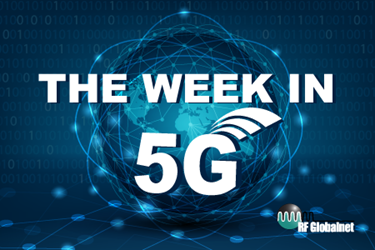The Week in 5G: 8/11/2020 — Qualcomm Protests Ban U.S. Huawei Ban; NIST Develops Portable 5G Measurement System
By Ed Biller

A recent Opensignal study collected data from 43 million+ devices and concluded South Korea and Japan offer the speediest 5G with average downlink speeds of 59 Mbps and 49.3 Mbps, respectively.
Per Tech Wire Asia, other nations who have achieved average 5G downlink throughput greater than 40 Mbps include Norway, Australia, and Switzerland. The article notes that, “despite only just introducing its 5G network, Canada is already seeing download speeds on par with South Korea, both coming in at a benchmark-setting 59 Mbps. – 50% faster than their fellow G7 nations France, Germany, Italy, UK, and the U.S.”
In technology news, engineers at the National Institute of Standards and Technology (NIST) have developed a portable measurement system the organization boasts is “the first to offer 5G wireless measurements with accuracy that can be traced to fundamental physical standards,” according to an NIST press release.
Dubbed SAMURAI (Synthetic Aperture Measurements of Uncertainty in Angle of Incidence), the system provides a “detailed portrait” of directional 5G device and channel performance across a frequency range up to 50 GHz. “The basic components are two antennas to transmit and receive signals, instrumentation with precise timing synchronization to generate radio transmissions and analyze reception, and a six-axis robotic arm that positions the receive antenna to the grid points that form the synthetic aperture,” states the release.
Meanwhile, Amazon Web Services has made available its AWS Wavelength service on Verizon’s 5G network in Boston and the San Francisco Bay Area, the company announced last week. “By embedding AWS compute and storage services at the edge of 5G networks, AWS Wavelength enables developers to serve edge computing use cases that require ultra-low latency like machine learning, Internet of Things (IoT), and video and game streaming,” the release states.
Amazon stated additional Verizon locations will be coming later this year, and the web giant also is working with telecommunications providers “including Vodafone, SK Telecom, and KDDI, to launch Wavelength Zones across Europe, South Korea, and Japan.”
Also the U.S., Qualcomm is lobbying lawmakers for the right to sell 5G microchips to Huawei, arguing the U.S. ban against working with the Chinese telecom giant inconveniences Huawei, but devastates U.S. manufacturers by locking them out of an up-to-$8 billion opportunity, reports TechRadar. Qualcomm states the void will be filled by foreign chipmakers unencumbered by the ban.
More positive news out of Washington is that the Pentagon and the White House have identified an additional 100 MHz in the mid-band spectrum to be auctioned off for 5G use. The spectrum ranges from 3450 to 3550 MHz and “currently supports critical military operations ranging from air defense, missile and gunfire control, counter mortar, battlefield weapon locations and air traffic control,” reports Voice of America.
However, Dana Deasy, chief information officer of the Department of Defense, stated the DoD’s spectrum relocation transition is being plotted to “minimize any impact to military operations.”
Moving to Brazil, Claro Brasil and Ericsson have partnered to deploy the first 5G network in Latin America using Ericsson’s dynamic spectrum sharing (DSS) technology. Per an Ericsson press release, the “5G services are being rolled out initially across 12 areas in Brazil in São Paulo and Rio de Janeiro.”
The release states use of Ericsson’s DSS solution gives Claro a jump on rolling out 5G services while they and other providers await use of the 3.5 GHz and the 26 GHz bands, as well as the 700 MHz and 2.3 GHz bands expected to go up for auction in Brazil some time next year.
